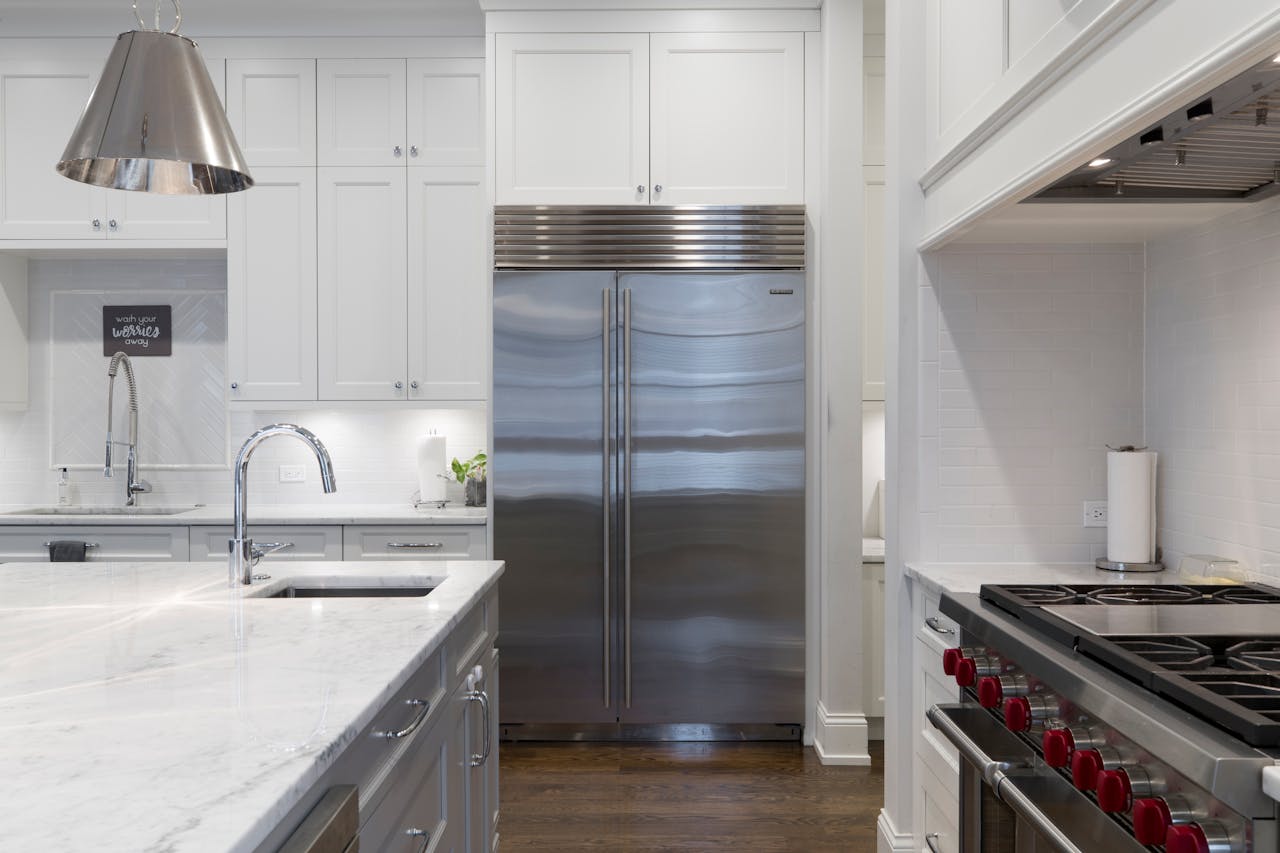Comments
- No comments found

When household appliances break down, the dilemma of repairing or replacing them presents itself.
Many lean towards buying new ones, influenced by the allure of the latest models or the misconception that repair is not worth the effort. However, this article champions the path less taken: repairing over replacing. Exploring the reasons behind this choice reveals not just financial wisdom but also environmental stewardship and an appreciation for the longevity and value of our everyday appliances.

Every year, millions of tons of electronic waste find their way into landfills worldwide, with a significant portion comprising discarded household appliances. These items, ranging from refrigerators to air conditioners, contribute to environmental degradation through the sheer volume of waste and the hazardous materials they contain, which can leach into the soil and waterways, causing widespread harm.
Choosing to repair appliances rather than discarding them can significantly mitigate this impact. Repairing extends the life of appliances, reducing the demand for new products and, consequently, the resources needed for manufacturing and transportation. Homeowners can play a crucial role in this process by opting for repairs whenever feasible, thus contributing to a more sustainable and environmentally friendly approach to consumerism.
The financial aspect of repairing versus replacing appliances is a compelling argument. Initial impressions may lean towards replacement as the more straightforward solution, but a deeper dive into the costs involved often reveals a different story. Repairs can be significantly less expensive than new models, especially for high-end appliances that last many years.
Obtaining estimates for repair and replacement is essential to navigate this decision wisely. Consider the age of the appliance and its expected lifespan. If a repair can extend the appliance’s life for several years at a fraction of the cost of a new one, it often makes financial sense to repair. Moreover, investing in maintenance can prevent future breakdowns, further enhancing the cost-effectiveness of the repair option.
A common misconception is that repaired appliances are less dependable than new ones. However, with the right expertise, a repaired appliance can perform as efficiently as before, if not better. The key lies in identifying the issue accurately and using high-quality replacement parts. For appliances that are not at the end of their service life, repairs can significantly extend their lifespan, offering a cost-effective alternative to replacement.
Homeowners should seek out reputable repair services that offer warranties on their work. This ensures not only the quality of the repair but also peace of mind for the homeowner. Additionally, regular maintenance after the repair can keep the appliance running smoothly for years to come, maximizing the investment in the repair, and often making the appliance more energy-efficient.
The repair process can seem daunting, but it can be straightforward and rewarding with the right approach. The first step is to find a reputable repair service. Recommendations from friends, family, or online reviews can be invaluable. Once a reliable service provider is found, it’s crucial to communicate the problem clearly and provide any relevant model information about the appliance.
For those considering DIY repairs, the internet is a treasure trove of tutorials and forums where advice and guidance are readily available. However, it’s important to realistically assess one’s skills and understand the risks of attempting a repair without professional help. Always prioritize safety, and consider consulting with a professional before beginning any repair work.
Air conditioning units and refrigerators are among the most commonly used appliances in homes and are also among those frequently faced with issues that can be effectively fixed. Common problems with these appliances include motor failure, which can often be remedied by replacing just the faulty part rather than the entire unit.
Finding a supplier for air conditioning and refrigeration motor parts is a critical step in the repair process. Look for suppliers with a strong reputation for quality and service, and ensure they stock parts compatible with your appliance’s make and model. Online marketplaces, manufacturer websites, and specialist repair shops are good places to start your search. Opting for genuine or high-quality aftermarket parts can make a significant difference in the longevity and efficiency of the repair. When sourcing parts, consider the warranty offered, the availability of customer support, and the supplier’s return policy. This can safeguard against potential issues post-repair and ensure that the appliance returns to its optimal functioning state.
Repairing appliances does more than just save money or extend their lifespan; it also carries an emotional value that is often overlooked. Fixing an appliance can foster a sense of accomplishment and self-reliance. There’s a unique satisfaction in knowing you’ve breathed new life into something that once seemed beyond repair. Furthermore, appliances often hold sentimental value; they’re part of our daily lives and memories. Opting for repair over replacement allows us to retain these items that hold personal significance, reinforcing a connection to our possessions that is increasingly rare in today’s throwaway culture.
To tap into this emotional value, consider the history and importance of the appliance in your home. If it has been a reliable companion for years, repairing it can feel like honoring a trusted old friend. This perspective changes our relationship with our things and encourages a more thoughtful approach to consumption.

The landscape of appliance repair is evolving, with modern trends making the process more accessible and appealing than ever before. The rise of online tutorials and a vibrant DIY community has empowered homeowners to undertake repairs themselves, armed with detailed guides and support from others. Furthermore, the availability of parts has improved, with online suppliers offering a wide array of options for almost any appliance model.
Embracing these trends requires staying informed and leveraging the resources available online. Engaging with forums and social media groups dedicated to appliance repair can provide valuable insights and encouragement. Additionally, manufacturers and third-party companies are increasingly offering workshops and tutorials, demonstrating a commitment to sustainability and the longevity of their products.
Opting to repair rather than replace a broken appliance is a decision that offers numerous benefits. It’s a choice that supports environmental sustainability, saves money, and often results in a product that serves your home well for many more years. Beyond the practical advantages, it encourages a deeper connection with our possessions and a sense of pride in our ability to maintain and repair the tools of our daily lives.
Before you face your next appliance breakdown, remember the value that repair can bring—not just to your wallet, but to the environment and your sense of satisfaction. Making an informed choice about repair versus replacement is a step towards a more sustainable and fulfilling way of living with technology.
By considering repair a viable first option, we benefit ourselves and contribute to a broader cultural shift towards sustainability and mindful consumption. When multiplied across millions of households, it’s a small but significant action that can lead to substantial environmental and societal benefits.
Leave your comments
Post comment as a guest